
Little Amal, the giant 3.5m-tall puppet of a young refugee girl, made by the South African Hand Spring Puppet Company, famous for their creation of “War Horse”, is visiting Naples on the 8th - 9th September 2021.
Little Amal is on an 8000 km journey from Turkey to London in order to highlight the plight of refugee children everywhere.
A warm welcome is prepared for her in Naples, where she will appear in the Royal Woods of the Capodimonte Palace and then in the Quartiere Sanità, a busting, densely populated area of the city. The events include music, dance spectacles and special events for children.
Info: www.walkwithamal.org
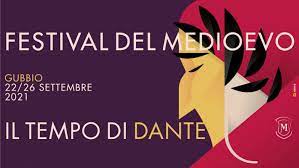
The 7th edition of the highly successful Mediaval Festival at the historic town of Gubbio (Umbria) will run between the 22-26th September 2021, and, in view of the fact this is the 600th anniversary of the death of the great poet Dante Alighieri, this year's theme will be: “Il Tempo di Dante” (Dante's Times).
The Festival, the brainchild of Umbrian journalist Federico Fioravanti, has gone from strength to strength since the first edition in 2015 and each year it concentrates on different aspects and themes.
The packed 5 day-long programme lists lectures by historians, writers and Dante experts from all over the world.
But it is not all heavy stuff. Some of the talks have intriguing titles such as “Dante between Dylan, rock n' roll and pop music”, “Dante and Advertising”, “Dante in Tweets,” “Dante and Comics” and “The table of the Poet with the dishes set before Dante and Boccaccio”.
On a more serious note, one session is devoted to “The Secret Language of Dante's Faithful” (“fans” in contemporary language) where Dante has inspired famous modern authors like Pound, Eliot, Joyce and Borges.
The Festival always devotes a section to Tolkien, the popular fantasy writer of “The Lord of the Rings”, set in a magical era relating to the Middle Ages. This year, the focus will be on connections between the worlds created by Tolkien and l'Inferno of Dante Alighiere.
Festival partners include the Study and Research Centre of the Italian Historic Institute of Medievalism and the Medieval Among Us organization, with the patronage of the University of Urbino Carlo Bo.
Info & bookings at info@festivaldelmedioevo.it www.festivaldelmedioevo.it

With Covid-19 still very much among us, it is interesting to see how Renaissance authorities coped with epidemics. An exhibition currently running in Venice gives a fascinating insight into the official measures taken to try to keep the deadly plague under control.
For centuries, the Plague, also known as the Black Death, decimated the population of Europe at recurring intervals. Without vaccines there was no cure, so how did societies cope? The Republic of Venice was one of the leaders in the field of 16th century prevention as illustrated in the fascinating exhibition “La Pandemica, una lunga storia: dalla Peste al Covid-19” (Pandemics, a long history: from the Plague to Covid-19) currently on show in the colonnaded entrance hall to Venice's public hospital - the Saints John and Paul Hospital, known locally as the San Zanipolo, in the Venetian dialect.
The exhibition shows a series of rare documents from the archives of the renaissance Scuola Grande di San Marco, the former seat of the St. Mark Confraternity (lay charitable institution), founded in the early Middle Ages. This magnificent building now constitutes the monumental entrance to the hospital. The documents illustrate how the authorities attempted to limit the spread of devastating infectious diseases in the past. Already in the early 16th century, the Venetian Senate introduced precautionary measures including an official pass (on display) attesting that the bearer was not a carrier of the contagion, the equivalent to today's EU Digital Covid Certificate.
No foreigners could enter Venice without this pass, which came in two forms – one for travellers arriving by land and another for those who came by sea, in which the port city of departure had been certified Plague-free. This was an important distinction as it was already known that ships were the main culprits regarding infection diffusion. A false document brought severe punishment or even the death penalty. This practice was subsequently copied by many other European cities.
The concept of quarantine was also introduced by the Venetian Senate in 1423 with the institution of the first Lazzaretto island on the lagoon, where plague sufferers were isolated from the rest of the population. Vinegar was used as a disinfectant, including full immersion in a tub, and the clothes and objects belonging to victims who died were burnt.
Little else could be done once the contagion caught on. Masks were worn and sufferers and their families would be subjected to home confinement. Evidently not much has changed during the last six centuries!
The exhibition is part of the 1600 anniversary celebrations of the foundation of Venice, which has been officially dated to 421AD. It is running until the beginning of October, with a planned digital version to be launched on the 13th September 2021
-
STENHOUSE
Contact: www.scuolagrandesanmarco.it

A HAPPY AND HEALTHY SUMMER TO ALL OUR READERS........WE'LL BE BACK IN SEPTEMBER

Announced only yesterday (28th July 2021) at the 44th edition of the UNESCO World Heritage Committee, meeting in Fuzhou (Republic of China), the inclusion of the ancient beech forests of Calabria in the UNESCO list.
The area consists of 8000 hectares of natural and unspoiled mountain woodland stretching over the regions of Aspromonte, Pollino and the Gargano peninsula and will be part of a vast transnational protected area, “the Ancient Beech Woods of Europe”, spanning several European countries, in which scientists will study the ability of this primordial ecosystem to adapt to climate change and preserve biodiversity.
Info: http://whc.unesco.org
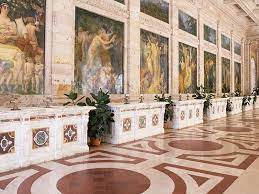
With the recent additions of Padua Urbs Picta, Montecatini Terme and the Porticoes of Bologna, Italy tops the list of UNESCO World Heritage sites, with a total 58 unique sites.
For the town of Padua, this is a dual triumph as it already has official UNESCO recognition of its historic Botanical Garden, a double honour it shares with Tivoli, which can boast Hadrian's Villa and the Villa d'Este.
Whereas the election of Padua's amazing cycle of paintings in the 14th century Scrovegni Chapel comes as no surprise, the Montecatini Spa is less well known for its art nouveau architecture and décor, placing it among the Great Spa Towns of Europe category in the UNESCO listing.
The Montecatini Spa consists of four natural hot springs, proven since 1417 to be efficacious for digestive problems. However, the spa attained world fame after it was launched in grand style by the Grand Duke Leopold of Lorena towards the end of the 19th century, when it was frequented by the royalty of Europe and major personalities of the arts. The entire complex was restructured in 1916, on the model of the magnificent Terme establishments of Ancient Rome, with a monumental entrance and decorated with sculptures, ceramic tiles and wall paintings in typical Liberty style, immersed in a huge public park.
Bologna's great network of covered porticoes stretching for a total 62 kms all round the city centre, closed the latest trio of Italian World Heritage sites nominated to the UNESCO list. A characteristic 12 kms of historic corridors were selected to represent the entire portico system.
M. STENHOUSE
Info: http://whc.unesco.org
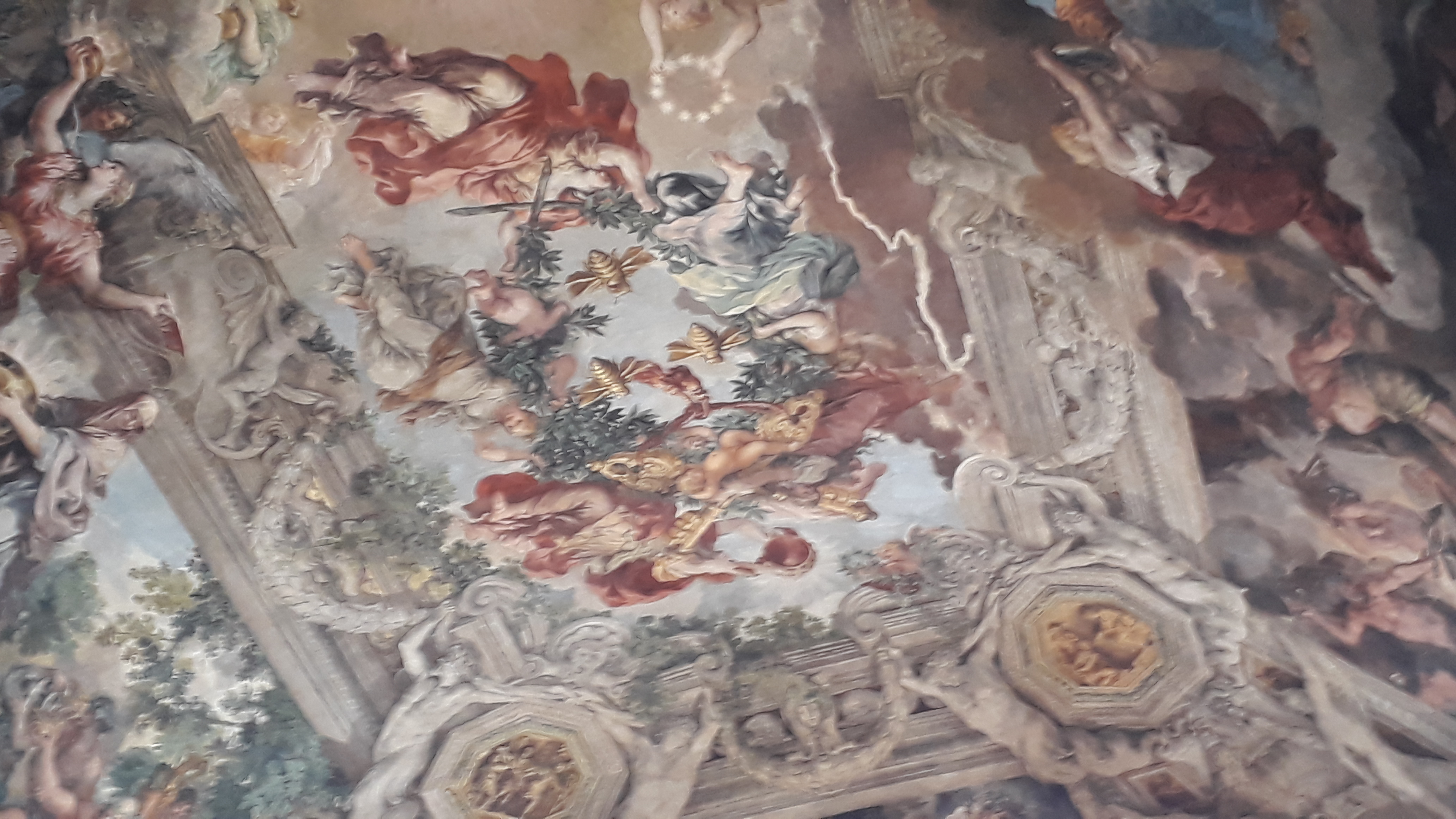
Between the 29th - 30th July, Rome will host the G20 of Culture, instituted by the Council of Europe at the last G20 meeting in Saudi Arabia in November 2020, when an important discussion was held on “the rise of the Cultural Economy...a new paradigm”, in which the important contribution that cultural activities make to economic development was officially recognized for the first time.
Rome's Cultural Ministry plans to pull out all the stops to make the event a splendid occasion to highlight Rome's unique artistic heritage. Participants will be dazzled by the venues chosen for the three-day event which will host 20 ministers plus the delegates from the participating countries. The Opening Ceremony will be held in the Colosseum, while summit meetings will take place in the vast salone in the Baroque palace of the Palazzo Barberini Gallery under the celebrated ceiling of the Divine Providence, painted by Pietro da Cortona. Delegates will also be treated to a concert by the Youth Orchestra Luigi Cherubini, directed by Riccardo Muti, at the Presidential Quirinale Palace and to a special guided tour of the Borghese Galleries.
Proceedings will be broadcast on 3 international Webinars on the Youtube channel of the Italian Ministry of Culture.
During the delegates' visit some streets and sights will be closed for security reasons.
Organizers assure that visitors with prepaid tickets will be entitled to a refund.
Info: www.iccrom.org www.g20.org www.coe.int it/g20 webinar
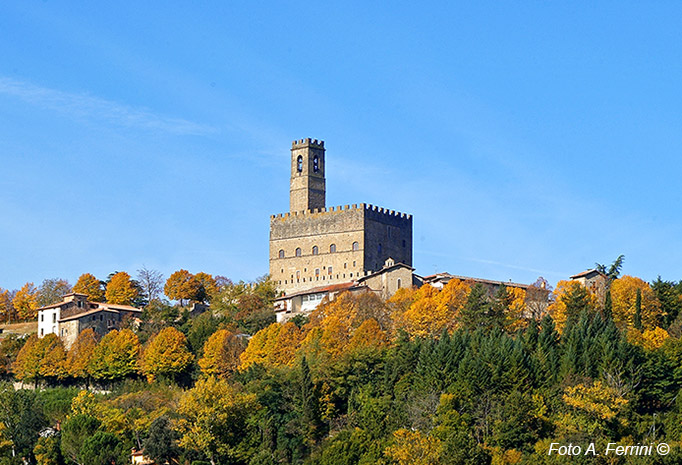
The landmark “Terre degli Uffizi” (Uffizi Lands) itinerant exhibition sparked off on the 17th July in the medieval castle of Poppi, symbol of the Tuscany Casetino Valley, with its sacred La Verna forest. Promoted by the Uffizi Galleries of Florence and the Foundation Cassa di Risparmio, (a non-profit offshoot of the former savings bank of the Grand Duchy of Tuscany) the five exhibitions planned to run throughout the year aim to attract visitors to some of the lesser known historic towns of the area.
The Poppi exhibition, entitled “In the sign of Dante. Casentino in the Divine Comedy” will run until the 30th November 2021 and focusses on Dante's exile from Florence and his long sojourn at the castle of Count Guidi, the overlord of Poppi Castle. While he was there, he composed the XXXIII Canto of the “Inferno”, which includes the horror story of Count Ugolino della Gherardesca, imprisoned by his enemy Archbishop Ruggieri and starved to death along with his sons and grandsons.
The exhibition shows works of art dedicated to The Inferno, Purgatory and Paradise. On loan is one of the Uffizi's most recent acquisitions: “Francesca da Rimini in Dante's Inferno” by 19th century artist Nicola Monte as well as seldom seen works such as “St. Francis Marries Poverty” by Beatrice Ancillotti Goretti and sketches by '500 artist Federico Zuccari.
The other exhibitions in this year's series:
San Godenzo (26th July - 5th August 2021): “Dante Alighieri and Andrea Del Castagno return to San Godenzo”
Anghiari (Arezzo - 12th August 2021 - 6th January 2022): “The World of Knights in Arms and the Renaissance Court”
Montespertoli (Florence - 25th August - 10th December 2021): “Valdesa Painters in the Style of Giotto”
Castigioni Fiorentino (Arezzo - 2nd October 2021 - 6th January 2022): “The Last Seal – the Stigmati of St. Francis and the Verna from the Uffizi Galleries Collections”
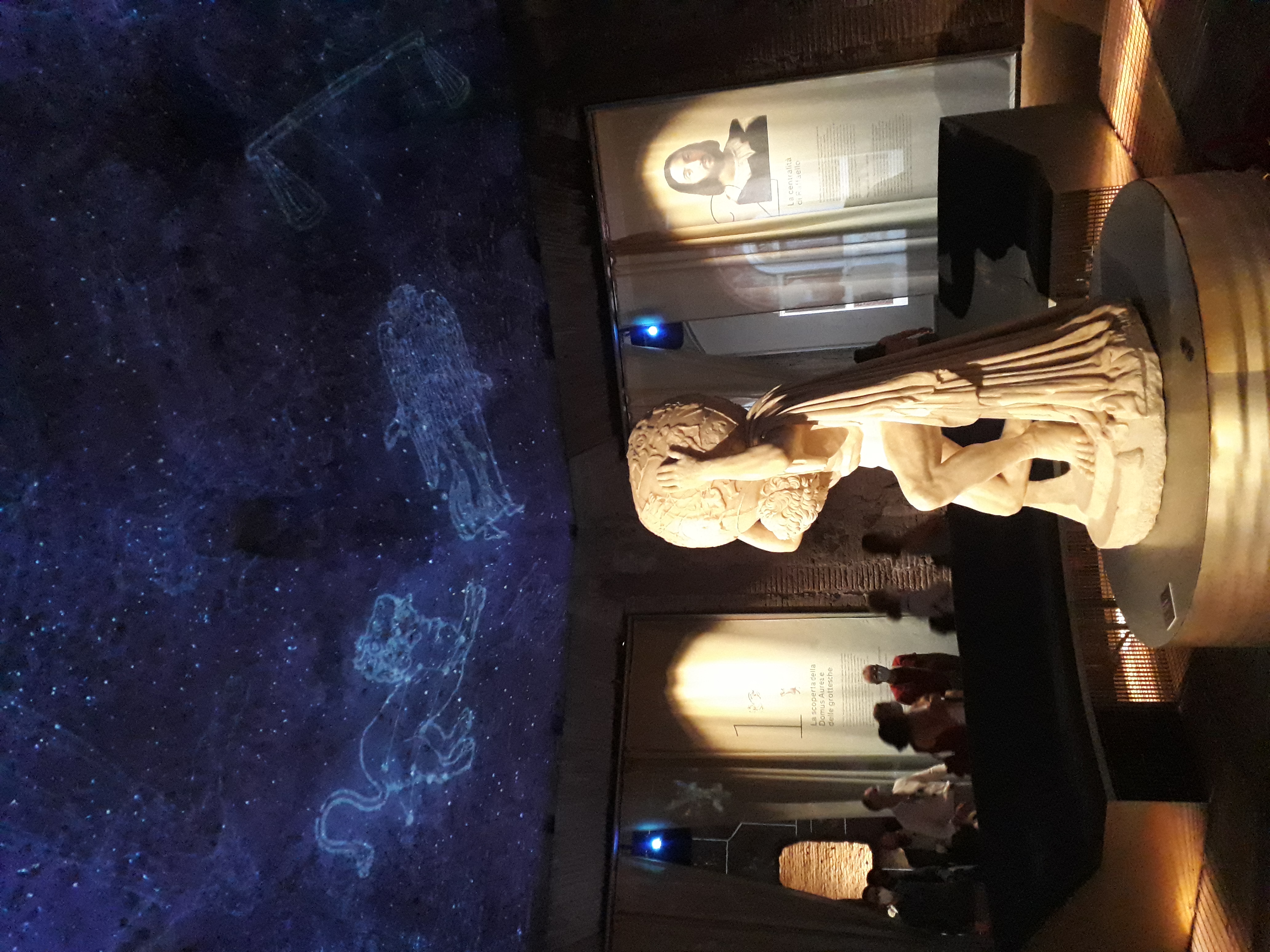
One of Rome's major tourist attractions is the recently re-opened Domus Aurea, the remains of what was the fabulous Golden House of the Roman Emperor Nero on the Colle Oppio Hill overlooking the Colosseum.
Although the site was inaccessible to visitors during the Covid lockdown, restoration work never let up throughout the months of closure, resulting in additional spaces and rooms now on view and a more enhanced visitor experience.
A recent major improvement has been the construction of a new entrance linking the underground areas with the Oppio Park 6 metres above through an innovative pedestrian walkway designed by leading Milan architect Stefano Boeri. This allows a gradual descent through the various strata of the archaeological remains, which include Baths built by Trajan over the ruins of the palace.
The Domus Aurea was an enormous construction spread over 80 hectares and with more than a thousand rooms, all decorated with frescoes in the style of the famous stylized “Grotesques”, so called because the artists of the Renaissance who first ventured into the rooms believed they were in “grottos” or caves and not man-made buildings.
The current exhibition “Raphael and the Domus Aurea” that commemorates the 500th anniversary of Raphael's death, centres round the Octagonal Room, a masterpiece of Roman architecture, with five adjoining rooms animated with multimedial special effects and video-mapping, designed by the Interaction and Exhibit Design Studio Dotdotdot of Milan is guaranteed to fascinate visitors of all ages.
The exhibition runs until the 7th January 2022, while the Domus Aurea will continue to be open normally as one of Rome's major sights. At the moment, prior booking is required.
M.STENHOUSE
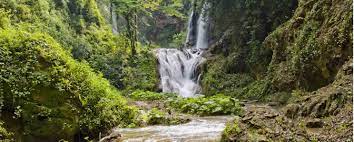
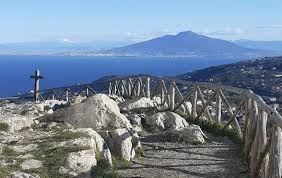
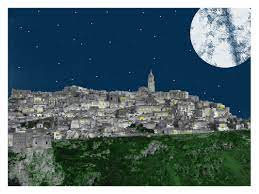
FAI (Fondo Ambiente Italiano), the equivalent of the UK National Trust, has launched a series of guided evening excursions in some of the most magical spots in the Italian peninsula.
1) Villa Gregoriana at Tivoli, the botanical cliff-side garden created by Pope Gregorio XVI, one of Italy's most romantic gardens and a favourite subject among artists of the Grand Tour, can be explored by torchlight:
Dates: 17, 24 July and 7, 14, 21, 28 August 2021.
Info: Tel. +39.0774.332650 faigregoriana@fondoambiente.it
2) I Sassi al Tramonto sunset walk among the Matera “Sassi” (the rock caves where once the local population lived in total poverty, but now transformed into exclusive dwelling houses, restaurants and boutiques) following the paths used by the peasant farmers returning home from the fields. Sampling of local products included.
Dates: Every Friday between 9th July- 6th August at 6 pm.
Info: Tel. +39.0835.335452 fainoha@fondoambiente.it
3) BAIA DI IERANTO at Massa Lubrense. A three hour trek with a professional AIGAE guide (Italian Association Guida Ambientale Escursionistica) along the Punta Campanella promontory to admire the sun going down over Capri, Procida and the Gulf of Naples
Dates: 10,16,17,29,30,31 July – 5,7,12,13,16,19,20,21,26,27,28, August.
Info: Tel. +39.335.8410255 faiieranto@fondoambiente.it
<< Previous ... 2 ... 4 ... 6 ... 8 ... 10 ... 12 ... 14 15 16 17 18 19 20 21 22 23 24 25 26 27 28 29 30 31 32 33 ... 35 ... 37 ... 39 ... 41 ... 43 ... 45 ... 47 ... 49 ... 51 ... 53 ... 55 ... 57 ... 59 ... 61 ... 63 ... 65 ... 67 ... 69 ... 71 ... 73 ... 75 ... 77 ... 79 ... 81 ... 83 ... 85 ... 87 ... 89 ... 91 ... 93 ... 95 ... 97 ... 99 ... 101 ... 103 ... 105 ... 107 ... 109 ... 111 ... 113 ... 115 ... 117 ... 119 ... 121 ... 123 ... 125 ... 127 ... 129 ... 131 ... 133 ... 135 ... 137 ... 139 ... 141 ... 143 ... 145 ... Next >>



